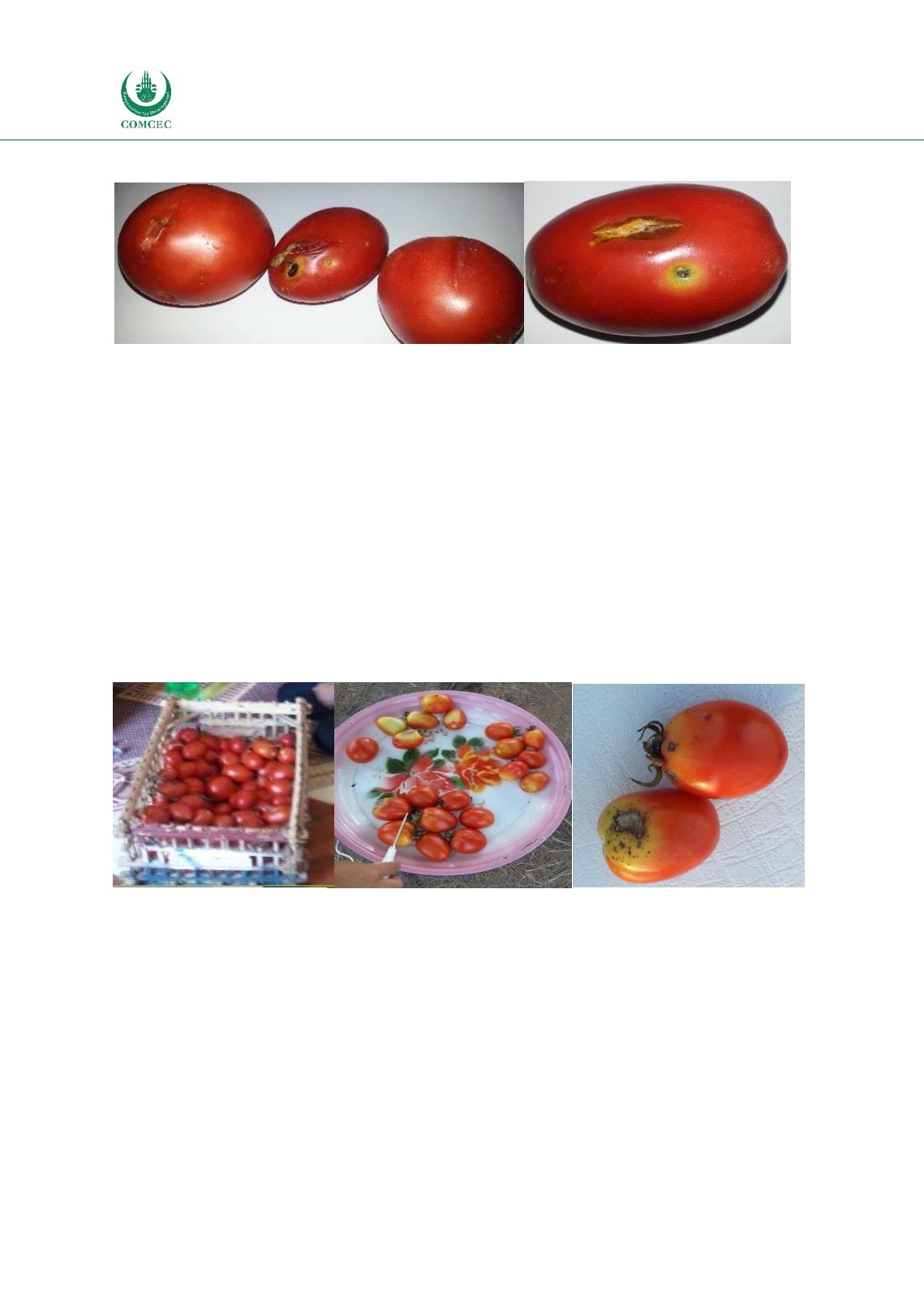

Reducing On-Farm Food Losses
In the OIC Member Countries
74
Figure 3.12: Insect and Mechanical Damage on Tomatoes Packed for Market
Photo Source: On-Farm Visits.
Causes of on-farm losses for tomatoes include:
Lack of pruning and thinning;
Poor blossom end rot control;
Lack of protection from sunburn;
Improper maturity at harvest (too early – will not ripen; too late - will be easily damaged
during transport from the farm to the market);
Rough harvesting practices damage the plants;
Lack of stems from rough harvesting reduce market value;
Leaving non-marketable fruits on the plants or in the field on the ground can spread
disease inoculum or insects pests;
Use of rough palm rib crates causes severe physical damage to tomatoes; and
Leaving fruits exposed to the sun after harvest.
Figure 3.13: Palm Rib Crates Used on Egyptian Farms and Damaged, Sunburned Fruits
Photo Source: On-Farm Visits.
3.5.4. Measures and Strategies Implemented for On-Farm Loss Reduction in Egypt
According to the individuals interviewed, including the facilitators, there are no donor-funded
projects to assist the tomato sector. There are several extension projects targeting pest
management and production improvements for fruits and vegetables. Pesticides are sprayed
every day from planting for 55 consecutive days, and then every three days until harvest.
Farmers also spray fungicides on the plants right after harvest to protect the weakened plants
and help them for the next harvest. There are no means of pesticide residue measurement and
control, which could lead to food safety problems.
















